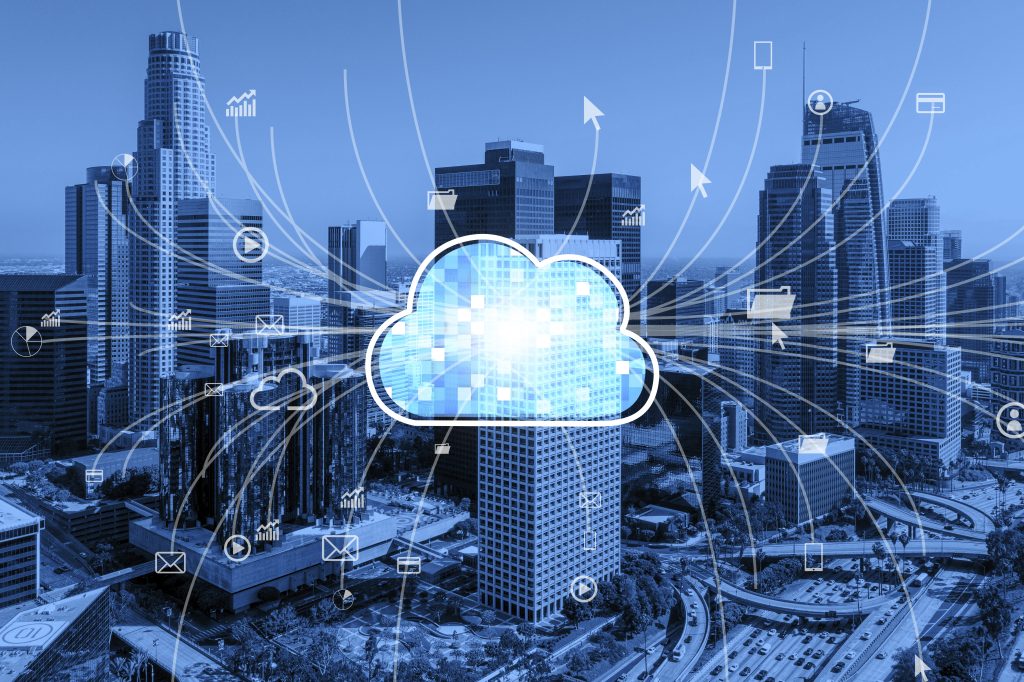Software as a Service (SaaS) is a cloud-based service where instead of downloading software on your desktop PC or business network to run and update, you instead access an application via an internet browser. The software application could be anything from office software to unified communications among a wide range of other business apps that are available. This is a significant departure from traditional model where individual licenses for each user or device need to be purchased. The software is bought via a subscription model, often monthly or annually, with the software hosted externally rather than on the user’s premises.
Here are some key components and benefits of SaaS:
Key Components of SaaS:
- Cloud Hosting:
- SaaS applications are hosted in the cloud, and users can access them via the internet.
- Subscription Model:
- Users subscribe to a SaaS service, often on a monthly or yearly basis, rather than purchasing the software outright.
- Automatic Updates:
- SaaS providers handle all updates and upgrades, ensuring that all users are accessing the most current version of the software.
- Centralized Data:
- Data is hosted centrally, ensuring that all users always have access to the same, most current data.
- Access Anywhere:
- As the software is hosted in the cloud and accessed over the internet, users can access the SaaS applications from any internet-enabled device and location.
- Security and Compliance:
- SaaS providers also offer robust security for their applications, including adherence to compliance standards.
Benefits of SaaS:
- Cost-Effectiveness:
- SaaS eliminates the upfront cost of purchase/installation, as well on-going costs like maintenance and upgrades.
- Time-Saving:
- With SaaS, the software is already installed and configured. Users can provision the server for an instance in one or multiple instances in a multitenant architecture.
- Scalability and Accessibility:
- Customers can access services for multiple users, subscribing to more services or features, or lessening the number of seats providing flexibility.
- Automatic Updates:
- The automatic updates reduce the burden on in-house staff.
- Enhanced Accessibility:
- As it can be accessed from anywhere in the world as long as there’s an internet connection.
- Reduced Time to Benefit:
- SaaS solutions are deployed over the internet, and the applications are ready for use almost immediately compared to traditional models.
Use Cases:
- Customer Relationship Management (CRM):
- Applications like Salesforce provide SaaS-based CRM solutions to manage customer interactions.
- Human Resources Management:
- Platforms like Workday offer SaaS solutions for HR, finance, and planning.
- Enterprise Resource Planning (ERP):
- Solutions like Oracle ERP Cloud are delivered under the SaaS model for modernized enterprise operations.
- Email:
- Solutions like Google Workspace and Microsoft 365 provide SaaS-based email and productivity suites.
SaaS is part of the cloud computing realm along with Infrastructure as a Service (IaaS) and Platform as a Service (PaaS), and continues to gain popularity due to the convenience and cost-savings it offers to businesses of all sizes.

Are you looking for an efficient and cost-effective way to manage your business? Look no further than Software-as-a-Service (SaaS). SaaS offers customers a comprehensive suite of software applications hosted on the cloud that are tailored to meet their specific needs. With SaaS, businesses can reduce infrastructure costs, maintenance time, and effort typically associated with traditional software installations. Additionally, users can access advanced features that help them streamline processes to focus more on increasing productivity and profits. And because it is offered on a subscription basis with flexible pricing plans, customers can take advantage of all these benefits without going over budget!
